Agronomy: What is the biggest challenge in raising soybeans?
This month I decided to switch things up just a bit by posing that question to several of my customers across southwest Illinois. The general consensus was that Weed Control is the #1 challenge. Here are a few of the responses I got: “Herbicide Resistant Weeds”, “The cost of having to use chemicals that are not working well”, “Waterhemp”, “Gramoxone didn’t work”, and “Weed Control is #1, but Liberty Link® has really helped with POST applications. But now crop injury from the Pre’s is an issue”. The responses I received did not work out quite as I had anticipated, as [...]
Agronomy: Good Things Come in Fours
As leaders in sustainability, Illinois soybean growers have a long history of increasing productivity while reducing negative environmental impacts. However, there is a need for agriculture to continue to improve by adopting the latest tools and technologies. The good news is that increasing efficiency and minimizing environmental impact helps keep more money in your pocket. Use the “4Rs” of nutrient stewardship—right source, right rate, right place and right time—as your guide to establish a solid foundation for nutrient management on your farm. Consider the source The right fertilizer source plays a significant role in ensuring that crops receive a balanced [...]
Weed Management: Controlling Volunteer Corn in Soybeans
Volunteer corn competes with soybeans for space, water, nutrients and light. University studies show that 2.4 volunteer corn plants per 100 sq. ft. can reduce yield by 10 percent. Just six volunteer corn plants per 100 feet of row can also reduce soybean yields by as much as 10 percent. In addition to yield loss, volunteer corn makes harvesting difficult and causes both shattering and dockage. Volunteer corn in soybeans is more commonplace today due to the adoption of the Roundup Ready® trait in corn and soybeans and continual use of glyphosate. Now volunteer corn will just survive—often in large [...]
Agronomy: Webinar: Strategies for Finishing Out the Soybean Season
Mike Wilson, Soy CCA Envoy from Southeast Illinois, explains why managing soybeans through Labor Day can help increase yield and ultimately improve growers’ bottom lines. He explains the issues that growers can see late in the season with disease, insects, weeds and nutrition. Key Takeaways By identifying late-season diseases, growers can follow through with the proper action Additional resource for disease management: cropdisease.cropsci.illinois.edu/soybeans Scouting fields is important through September as insect damage can occur late in the season Additional resource for insect management: https://extension.entm.purdue.edu/fieldcropsipm/soybean.php Weeds can become a significant problem if left uncontrolled Postmergence-only programs are not effective due [...]
Disease Management: Introduction of Harpin αβ for Reduction of Soybean Cyst Nematodes in Soybean
Growers can now tap into the soybean plant’s own defense mechanism to combat SCN. Soybean cyst nematode (SCN) has been found in most soybean-producing areas in the world. SCN was first found in North America in North Carolina in 1954 and since then has spread to many of the fields in at least 31 soybean-producing states and Canada. SCN is the most destructive pathogen of soybeans in the United States with annual yield losses due to SCN estimated at more than $1 billion annually. The question for agronomists and growers is what can be done to manage SCN populations. Once [...]
Weed Management: Remain Vigilant for Palmer amaranth
Palmer amaranth (Amaranthus palmeri) has garnered much attention recently in both academic discussions and popular press releases, and with good reason. Among the weedy species of Amaranthus, Palmer amaranth has the fastest growth rate and is the most competitive with the crops common to Midwest agronomic cropping systems. Soybean yield losses approaching 80% and corn yield losses exceeding 90% have been reported in the peer-reviewed scientific literature.While most concern focuses on Palmer amaranth in agronomic cropping systems, keep in mind that Palmer amaranth also can become established in noncrop areas. Palmer amaranth populations in noncrop environments obviously do not compete [...]
Plant and Soil Health: Phosphorus Deficiency in Soybeans
Everyone knows what phosphorus (P) deficiency looks like in corn—purplish color leaves. So it would be easy to expect similar symptoms for soybeans. But it turns out to not be the same. Phosphorus deficiency isn’t as easily identifiable as in corn or as potassium deficiency is in soybean tissue. As an agronomist I must admit that I never thought much about P deficiency symptoms below. In early July I decided to look for an image online and see if a P deficiency in beans was similar to corn. I quickly learned that it isn’t and that there are really no [...]
Insect Management: Managing Japanese Beetles
Will a Japanese beetle breakout this year force growers to spray? Our advice – scout your fields to see if beetles are a threat and if treatment is warranted. Photo courtesy of Eric Ifft, Bayer CropScience In mid-July I was scouting some soybean fields in central Illinois. About 30 percent of the fields I walked in had Japanese beetle populations at the treatment levels. The other 70 percent had some beetles in them even though spraying was not justified. Of course I was only in 10 fields so that is hardly a big sample but the fact that each of [...]
Weed Management: WSSA Survey Ranks Palmer Amaranth as the Most Troublesome Weed in the U.S.
It’s now official. A survey conducted by the Weed Science Society of America (WSSA) has ranked Palmer amaranth, also known as Palmer pigweed, as the most troublesome weed in the U.S. Weeds in the Galium genus (cleavers, catchweed bedstraw and false cleavers) ranked as the most troublesome in Canada. “We certainly weren’t surprised to find Palmer amaranth at the top of the U.S. list,” says Lee Van Wychen, Ph.D., science policy director for WSSA. “This weed can have a devastating impact on crop yields. Its stems are tough enough to damage rugged farm equipment, and it is extremely prolific. A [...]
Plant and Soil Health: Genetic Controls of Nitrogen Fixation
Scientists have longed dreamed of transferring the nitrogen fixation trait found in soybeans and other legumes to grain crops. Just imagine for a moment all the money growers could save on nitrogen and, by extension, the reduction of nitrogen in surface waters. Remember that bacteria (rhizobia species) take up residence in the roots, form nodules, take nitrogen out of the air and feed it back to the plant while the plant feeds on water, nutrients and sugars. However, this is not an easy trait to transfer because it involves multiples genes with different functionalities that have to turn on at [...]

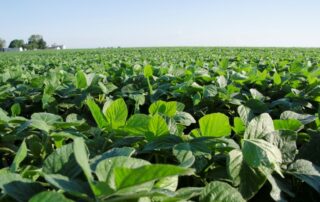
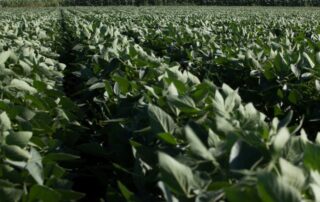
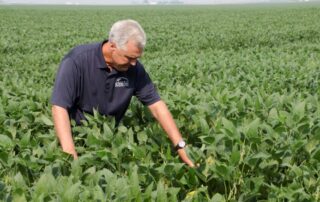
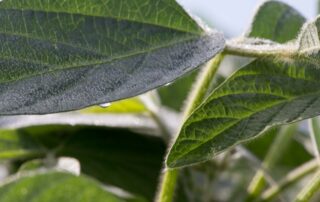
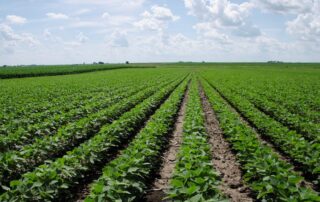
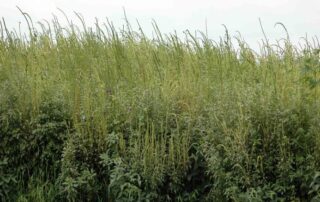
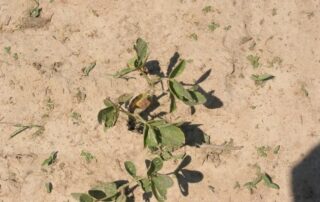
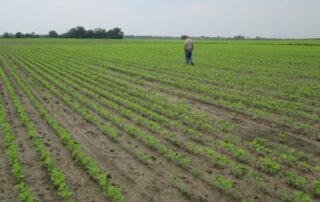
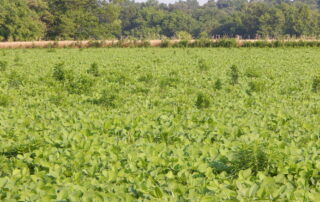
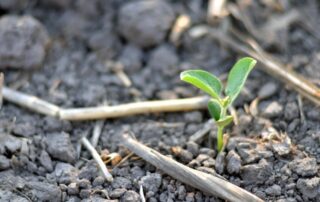

 and then
and then